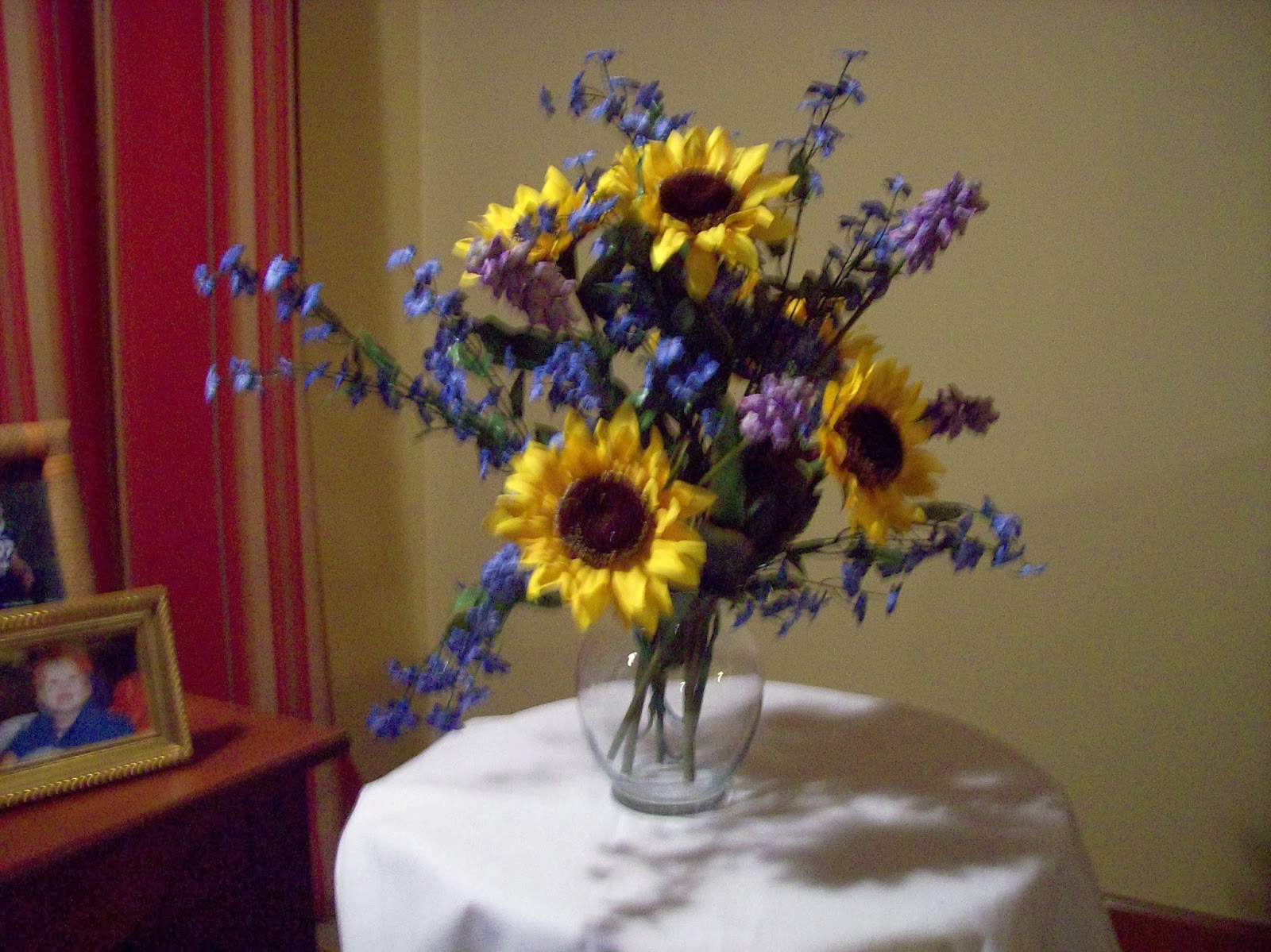 One of the best subjects to learn from in my opinion is flowers. If I make my own arrangement to work from, I learn what colors work best together and how to set up a nice composition. I can also manipulate the lighting – its direction and tint. Because we get some of the best colors in shadows, I always set up my one source of light coming from a side or angled direction rather than face-on. If I took a black and white photo of this, I would have distinct areas ranging from dark to light. This variation in value is what will make the painting–even more than the colors I choose! In this photo, the light is white, but if you want a different tint, use a yellow lightbulb or cover the spotlight with tinted cellophane.
One of the best subjects to learn from in my opinion is flowers. If I make my own arrangement to work from, I learn what colors work best together and how to set up a nice composition. I can also manipulate the lighting – its direction and tint. Because we get some of the best colors in shadows, I always set up my one source of light coming from a side or angled direction rather than face-on. If I took a black and white photo of this, I would have distinct areas ranging from dark to light. This variation in value is what will make the painting–even more than the colors I choose! In this photo, the light is white, but if you want a different tint, use a yellow lightbulb or cover the spotlight with tinted cellophane.Most flower arrangements come in a nice, rounded shape, packed with flowers. However, if I were to paint all two dozen roses, the product would be a busy mess! I choose to simplify the layout because I don't want too many elements competing for attention. Also If I painted the flowers in a perfectly arranged dome, the viewer's attention would only stay on that one contained area of the canvas. Instead I like to make interesting and organic contours or silhouettes. When there is a sprig of flowers sticking out randomly, it draws the eye and makes the eye follow it till its tip, leading the viewer into the rest of the painting.
 I also kept the colors simple. Yellow and purple are complementary colors, meaning if they are put next to each other, they will create a contrast to make each other stand out. If there is warm light coming, the shadows will be of cool colors. As long as I keep the value the same, I can shift the color as many ways as I want. A sky or sunset is a good example of this, but I'm planning to do a post on color mixing eventually.
I also kept the colors simple. Yellow and purple are complementary colors, meaning if they are put next to each other, they will create a contrast to make each other stand out. If there is warm light coming, the shadows will be of cool colors. As long as I keep the value the same, I can shift the color as many ways as I want. A sky or sunset is a good example of this, but I'm planning to do a post on color mixing eventually.Because there is a strong source of light, you can see distinct areas of light and shadow on the flowers and table. I typically add something else in the foreground, like a plate, fruit or a book to fill the empty space on the table. Also notice that I never put the vase in the center of the canvas and I always make part of the flowers go off the page. My goal is to make sure the viewer's eye follows to every corner of the canvas. I changed the shape of the table and used a solid color for the background. The pink may stand out a little too much, but usually I mix some shade of grey or a neutral color.
No comments:
Post a Comment